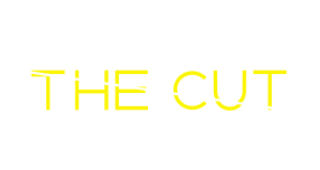There’s a common idea that to grow muscle, you need to be lifting heavy weights.
It is believed that low rep counts of high weight, are much better for increasing muscle mass than doing lots of reps of smaller weights.
But is this true or is it simply another fitness myth?
Let’s find out
Why Does Muscle Grow?
Muscles are packed full of fibers. When you exercise and put these muscles under considerable strain, the fibers are damaged.
The process of fixing these damaged fibers leads your body to build new ones. Every fiber is filled with small elements known as myofibrils. As your muscles constantly rebuild, the myofibrils grow wider, which in turn leads to muscle growth.
But if it was as easy to grow huge biceps and ripped abs as it sounds, we would all have them.
Unfortunately, muscles need to feed.
The above process is known as muscle protein synthesis, but the body also goes through something else when working out; muscle protein breakdown.
Your muscles need protein to exercise, and they use it up when doing so. This leaves a balance in the middle which if you hit, you will not grow or lose muscle. Any flux though, and changes will start to be made.
If you provide plenty of protein to your muscles and you can keep a positive protein balance, muscles will soon start to grow.
Lifting Big
When thinking of muscle fibers, one thing that really gets them moving is stress.
When lifting weights, the heavier you go, the more strain it puts on your body.
Enter ‘fast twitch’, or type 2 muscle fibers. This is a phenomenon that is triggered when you start to lift heavy weights. This speeds up the muscle-building process and allows you to boost your strength quickly.
Sounds great, right?
Well, there is a downside. Too much too fast can lead to injuries, and sometimes have the opposite effect of slowing your training down.
Of course, the idea of heavy is completely relative to who is lifting.
If you’re a bodybuilder, you’ll probably have a whole different concept of what ‘heavy’ means when compared to a gym beginner.
Heavy in this case is around three-quarters of your maximum lift. If this can be repeated for 3 or 4 reps, that’s a good workout.
The temptation then comes to go higher. Be warned. It is valuable to take your time when thinking of increasing your workout.
If you are trying to build muscle mass, after a lot of strain, the muscles need time to repair. Working out constantly or increasing weight too quickly can lead to muscle fatigue and this can put an end to the growth for a time being.
Lifting Small
Small weights are often seen as not as helpful for building muscle but instead better used to tone up.
Well, that may not be the case.
The muscle is still being worked, it is just this time a different type of fiber is working. When not exerting enough strain to activate the type 2, or fast twitch, fibers, type 1s work instead. These are classed as ‘slow twitch’ and work much slower than the other types.
It is often looked upon as more useful to use this method to tone up because, well, it is.
More calories are burned when lifting small weights in high reps than when done the other way round. But does this mean the same amount of muscle isn’t built?
Well, a 2010 study by McMaster University says not. Two groups of experienced weightlifters used different weights, heavy and small, and the effects on their muscles were the same. After 12 weeks, muscle mass and fiber growth in both parties were identical.
The reason for this?
There was one common denominator. They both went to the point of failure.
Going to Failure
Whether lifting heavy or small, you will reach a point at which you simply can’t go any further.
Every gym-goer has been there. When you’re running and you hit the ‘wall’, or when you’re trying to push out one more rep and your arms simply won’t let you.
In the McMaster experiment, both parties lifted different weights, but they both went until they couldn’t do a single more rep.
By pushing your body to its limit, you are effectively pushing your muscle as far as it can go. Whether this is achieved by using light weights, or heavy ones, the reaction in this experiment was the same.
Other Effects on Muscle Growth
Now, this isn’t to say that if you buy yourself some dumbbells and start working out, then in a few months’ time you will be Arnold Schwarzenegger.
Muscle growth is affected by many factors, including how many calories you consume, the age at which you are, your hormone levels and how much protein, carbohydrates and water you take in.
Every body in the world is different, and every one will grow muscle in a different way.
The key to building muscle is finding what works for you, whether this is lifting a couple of heavy reps or a lot of light ones.
Final Thoughts
If you’re looking to build muscle, be warned. It isn’t easy.
Pushing yourself to the point of failure and working up a sweat aren’t always enjoyable, but the feeling when you begin to see a body transformation make all the pain worthwhile.
The best way to work out is to be focused on what you want to achieve. This is where we come in. Why not speak to one of our personal trainers today and see how they can build you a plan to grow your muscle mass? Find us here.
